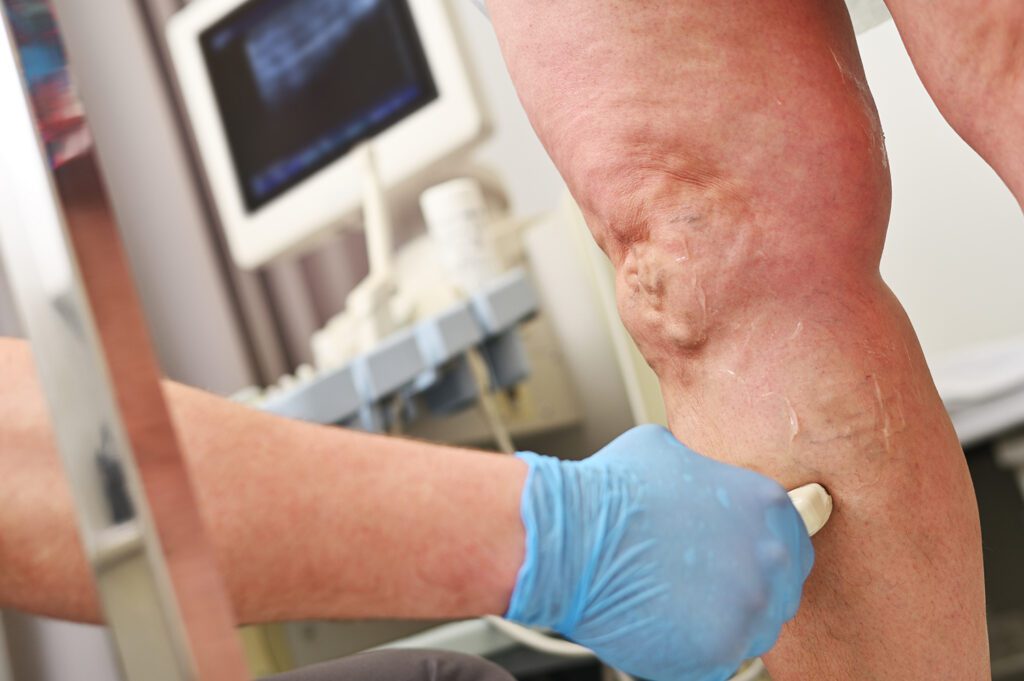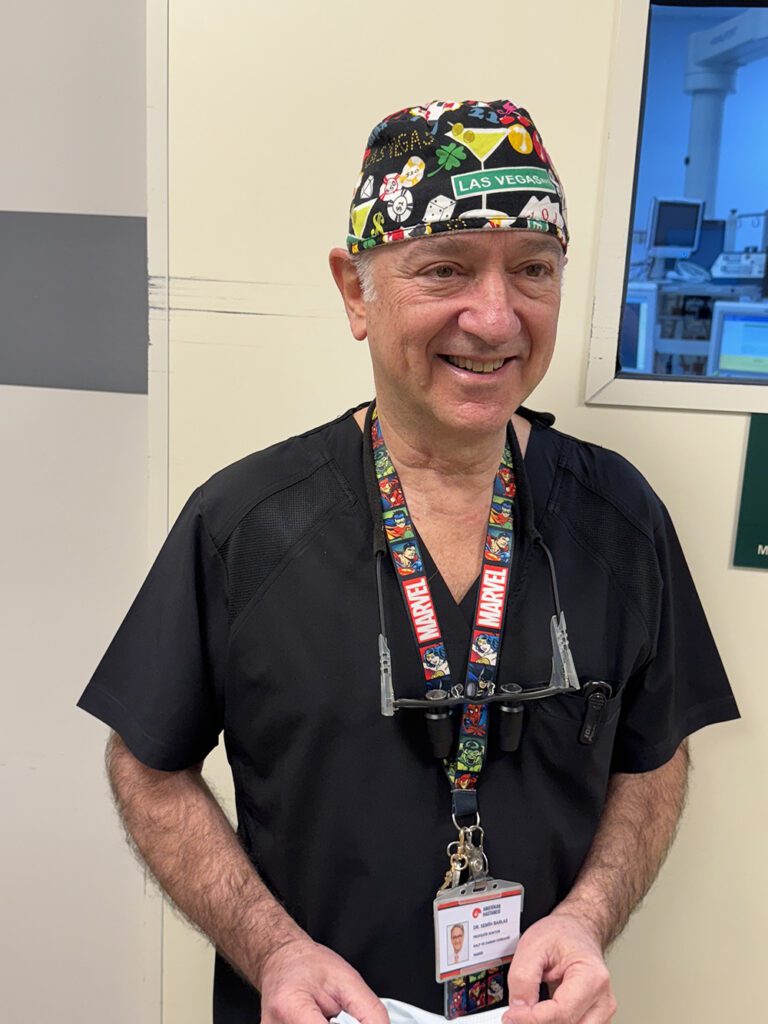Endovenous Trunkal Ablation (EVTA) therapy stands out today as one of the most effective and safest treatments for varicose veins. This innovative, minimally invasive treatment has replaced classical surgical methods, offering enhanced patient comfort and remarkable success rates. With a five-year success rate of up to 86%, EVTA opens the doors to a new era in varicose vein treatment.
What Is EVTA – Endovenous Trunkal Ablation?
EVTA – Endovenous Trunkal Ablation is a minimally invasive method used to treat valve insufficiencies in major superficial veins, particularly the great and small saphenous veins. During the procedure, a thin catheter is inserted into the vein under ultrasound guidance. Through this catheter, laser or radiofrequency energy is applied to the vein wall, causing it to collapse and seal shut.
The vein is not surgically removed or cut; therefore, no stitches, incisions, or significant scarring occur. The procedure is performed under local anesthesia, allowing the patient to remain conscious and in communication with the doctor throughout.
Why Were Traditional Varicose Vein Surgeries Abandoned?
Traditional surgeries required general anesthesia, involved long recovery periods, and often resulted in bruising, pain, and other complications. The demand for safer, more comfortable, and aesthetically pleasing solutions has made EVTA and similar treatments the preferred choice in modern medicine.
Advantages of EVTA
- No general anesthesia required
- Short procedure time (10–20 minutes)
- Same-day discharge
- No cuts, stitches, or bleeding
- Minimal pain
- No visible scarring
- Quick return to daily life
- Up to 86% success rate
Thanks to these benefits, EVTA has become a first-line treatment for both patients and doctors.

Which Veins Are Suitable for EVTA?
EVTA is commonly used on:
- Great Saphenous Vein (GSV) – runs along the inner thigh
- Small Saphenous Vein (SSV) – located at the back of the calf
- Perforator Veins – connect the superficial and deep venous systems
Valve insufficiency in these veins is detected through Doppler ultrasound. If reflux is found, EVTA is generally recommended.
Who Is a Good Candidate for EVTA?
- Individuals with persistent leg pain, swelling, or night cramps
- People who stand for extended periods and experience a reduced quality of life
- Patients seeking treatment for cosmetic or medical reasons
- Those who prefer to avoid surgery
- Individuals at risk for general anesthesia complications
How Is EVTA Performed?
- Mapping the vein with Doppler ultrasound
- Administering tumescent local anesthesia
- Inserting the catheter
- Applying energy to close the vein
- Wearing compression stockings post-procedure
The entire process typically takes 15–20 minutes, and patients can walk and leave the clinic within 30 minutes after the procedure.
Laser and Radiofrequency Technologies
Laser (EVLA):
Uses high-energy light to contract and seal the vein.
Radiofrequency (RFA):
Applies heat energy at a low frequency to close the vein’s inner wall.
Both methods offer high success rates and similar recovery periods.
Post-Treatment Process
- Walking is encouraged immediately after the procedure
- Compression stockings should be worn for 1–2 weeks
- Showering is allowed after 24 hours
- Pain is minimal; simple painkillers are sufficient if needed
- Bruising generally disappears within a few days
Rare Side Effects
- Temporary numbness
- Mild bruising and firmness
- Light redness on the skin
- Rare occurrence of deep vein thrombosis (DVT)
All these side effects are preventable with proper precautions and an experienced medical team.
Long-Term Success and Recurrence
- 5-year success rate: 86%
- Risk of vein reopening: 9–14%
- If recurrence occurs, chemical ablation or other treatments can manage the condition effectively
About Prof. Dr. Semih Barlas

Prof. Dr. Semih Barlas completed his medical education at Cerrahpaşa Medical Faculty and pursued his specialization in Cardiovascular Surgery at Istanbul Medical Faculty. Aiming for international excellence, he continued his advanced training in Pediatric Cardiac Surgery and Arrhythmia Surgery in the UK, working alongside world-renowned names such as Leslie Hamilton, B. Sethia, and Colin J. Hilton.
In the field of vein diseases, Prof. Barlas received advanced training in modern diagnostic and treatment methods at various prestigious centers across Europe. In the United States, he worked with leading phlebologists such as Nick Morrison, B.B. Lee, Lowell Kabnick, and Todd Berland at the Morrison Vein Institute and New York University.
Since 2008, he has focused exclusively on varicose vein treatments and successfully performs modern minimally invasive procedures, particularly EVTA. His goal is to provide personalized, safe, and effective solutions tailored to each patient’s condition. Thanks to his academic background and hands-on expertise, Prof. Dr. Semih Barlas has helped thousands of patients improve their quality of life.
Frequently Asked Questions
How soon can I return to work after EVTA?
Usually the next day.
Is the procedure painful?
Pain is minimal and easily managed with basic painkillers.
Will the vein completely disappear?
Yes, the closed vein is absorbed by the body within 6–12 months.
Can the vein reopen?
This is rare, occurring in 9–14% of cases.
How long should compression stockings be worn?
Typically for 7–14 days.
Is general anesthesia necessary?
No, local anesthesia is sufficient.
Conclusion
Endovenous trunkal ablation is a contemporary, safe, aesthetic, and effective treatment for varicose veins. Unlike traditional surgery, it provides comfort, faster recovery, and long-term success. When performed by a skilled expert, the treatment is seamless and highly successful. For those seeking relief from varicose veins, EVTA is one of the most reliable modern-day solutions.
Internal Links
External Links

